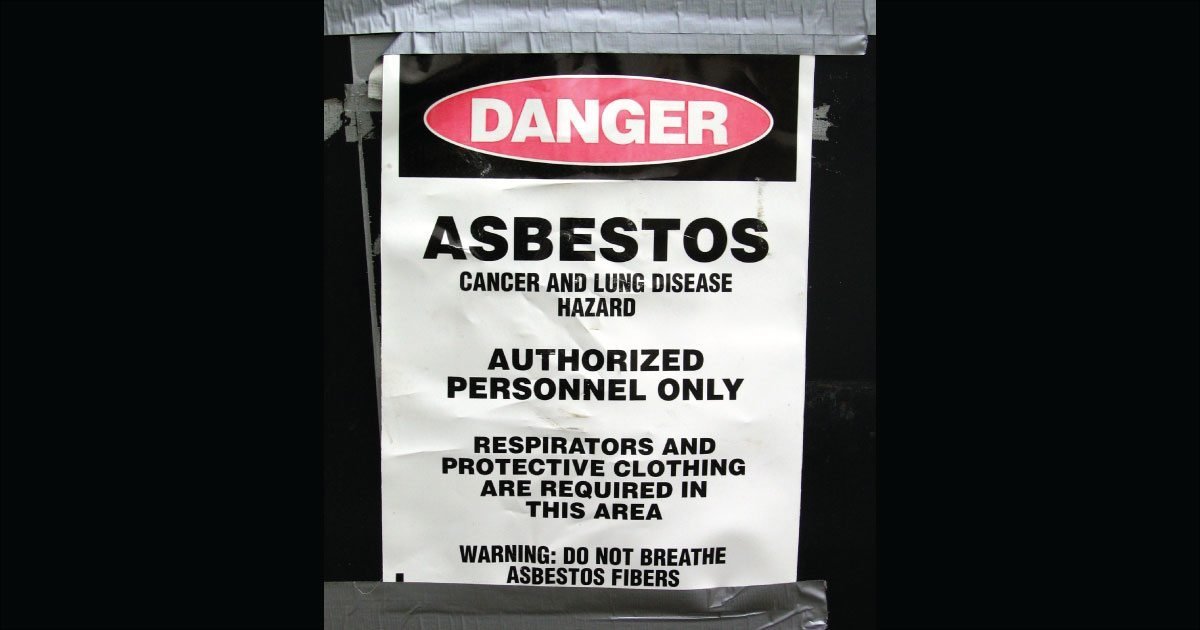OSHA Sampling Shows Asbestos Air Measures Above Permissible Limits

An analysis of air sampling data in four industries shows breathable asbestos levels well above limits set by the Occupational Safety and Health Administration (OSHA).
OSHA established in the late 1980s a permissible workplace exposure limit of 0.2 fibers per cubic centimeter of air (0.2 f/cc), averaged over an eight-hour work shift. It also set a short-term limit of one asbestos fiber per cubic centimeter of air (1 f/cc) averaged over a 30 minute sampling period.
But according to an analysis of OSHA air sampling data collected over the period 1984-2011, personal air samples frequently exceeded OSHA exposure limits for four asbestos-using industries, with some measurements reaching as high as 175 f/cc.
“Asbestos compliance sampling data associated with the construction, automotive repair, manufacturing, and chemical/petroleum/rubber industries included measurements in excess of 10 f/cc, and were above the permissible exposure limit from 2001 to 2011,” writes lead researcher Dr. Dallas M. Cowan in a study published in Regulatory Toxicology and Pharmacology.
http://www.sciencedirect.com/science/article/pii/S0273230015001014
Airborne asbestos fibers result from raw asbestos used in manufacturing and the handling of asbestos products, which remain legal in the United States despite the dangers of asbestos exposure being established in scientific literature by the 1960s. Asbestos fibers in any amount can cause mesothelioma and other diseases, even with only one exposure incident.
Asbestos-containing products such as cement sheet, roofing products, and automotive components continue to be manufactured, imported, processed, and distributed in the United States. The Environmental Working Group (EWG) reports that over the last decade alone, more than 8 million pounds of raw asbestos have entered U.S. ports in addition to hundreds of shipments of asbestos-containing products. A recent EWG analysis puts the number of annual U.S. asbestos deaths at 12,000-15,000.
Construction workers can encounter asbestos while installing new products or while working on buildings with existing asbestos products. Automotive repair workers create asbestos dust when working on vehicle brakes, transmission components, and engines. Manufacturing workers who make products with raw asbestos are also at risk of exposure, while workers in the chemical/petroleum/rubber industries come into contact with asbestos-insulated machinery, asbestos gaskets, asbestos construction materials, and other asbestos products.
Complete Ban on Asbestos Needed
The Cowan report doesn’t contain all bad news. It also notes “historically decreasing trends in the consumption of asbestos,” declining mesothelioma incidence rates, and declines in airborne asbestos concentrations in some industries over the past 30 years.
Short of a complete asbestos ban, however, asbestos products will continue to put thousands of American lives per year at risk. Creating an asbestos-free future means acting now, since mesothelioma can take 15 to 50 years or more to develop following exposure to asbestos. Currently two competing bills—one that calls for an outright asbestos ban and another that does not and is generally viewed as more pro-chemical industry—are facing off in Congress.
Workers who believe they’re being exposed to asbestos can report the alleged violation to OSHA, which has the authority to impose monetary penalties on companies that expose workers to asbestos and other workplace hazards. Workers who are diagnosed with an asbestos disease may wish to assess their legal options.
“Analysis of workplace compliance measurements of asbestos by the U.S. Occupational Safety and Health Administration (1984-2011)” can be read in full on ScienceDirect.
http://www.sciencedirect.com/science/article/pii/S0273230015001014
Free Mesothelioma Patient & Treatment Guide
We’d like to offer you our in-depth guide, “A Patient’s Guide to Mesothelioma,” absolutely free of charge.
It contains a wealth of information and resources to help you better understand the condition, choose (and afford) appropriate treatment, and exercise your legal right to compensation.
Download Now